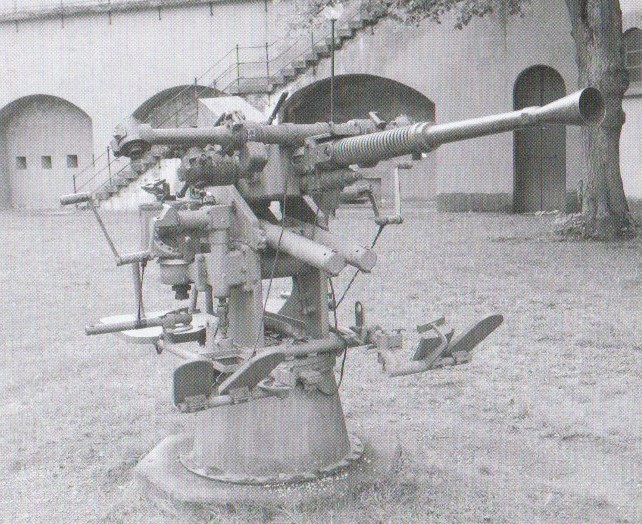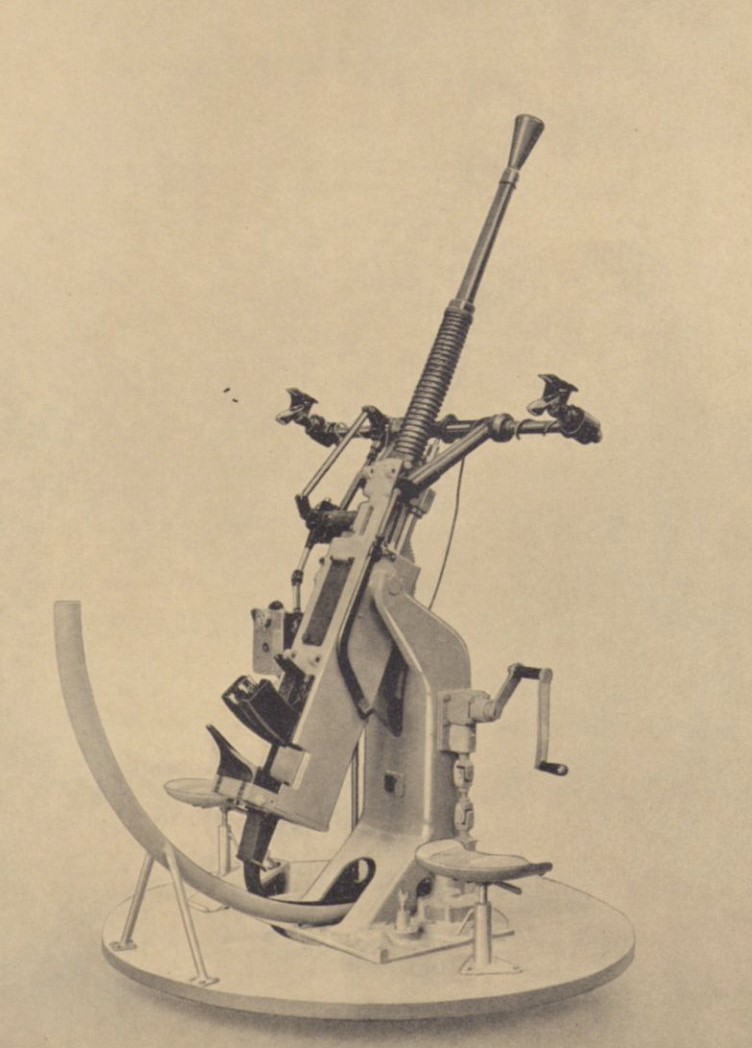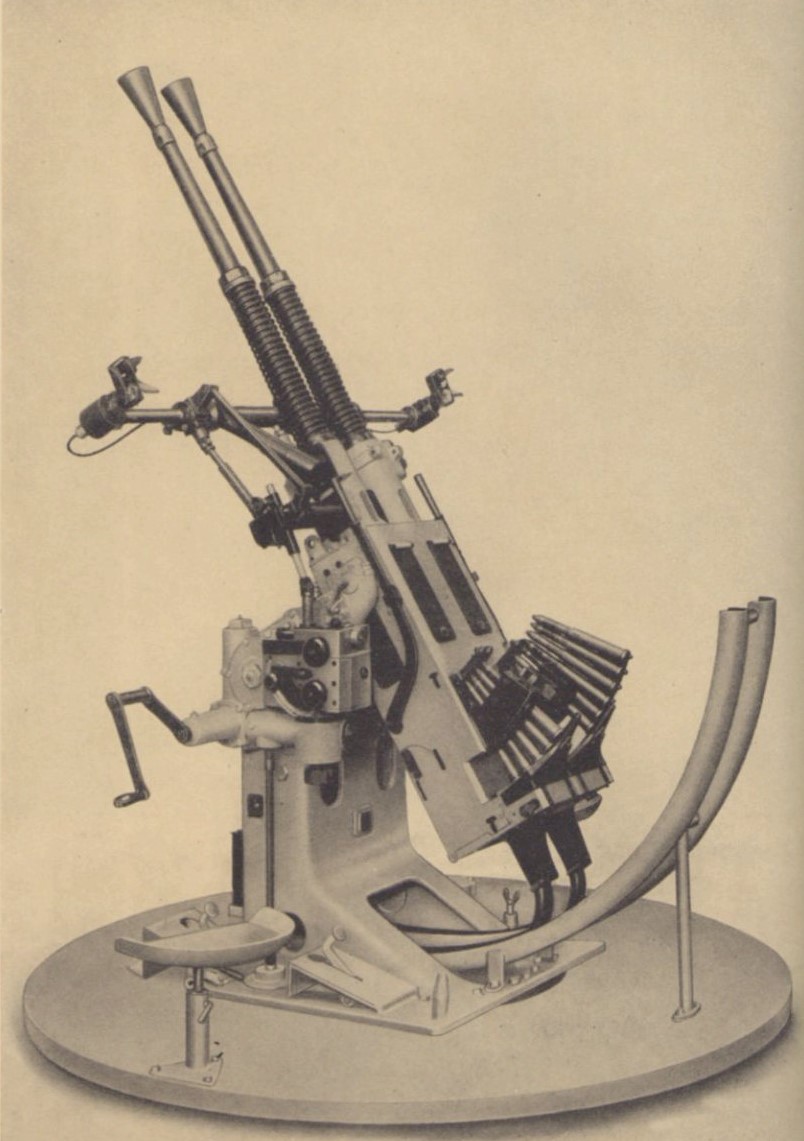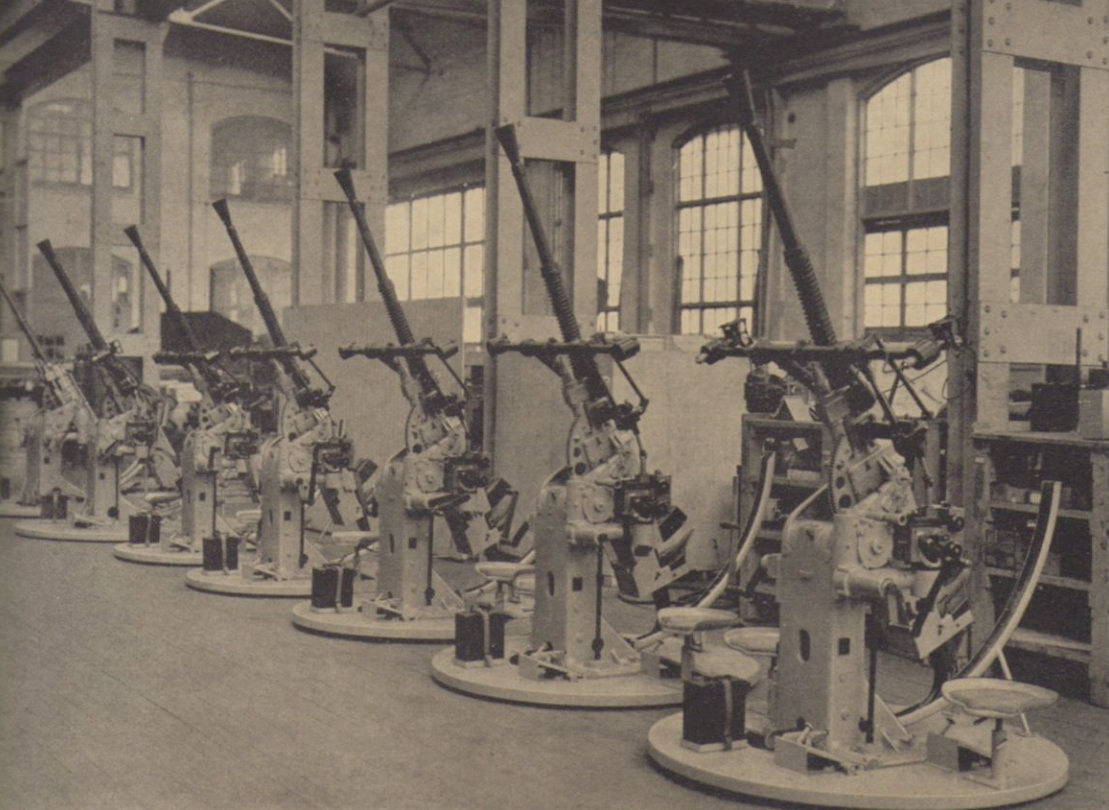
In the early 1930s, Bofors was hard at work developing a new AA weapon which became the famous 40 mm L/60 Model 1936 AA gun. The Swedish Navy was actively funding this project, but they were also interested in a smaller 20 or 25 mm gun. Firing trials with foreign guns were conducted in 1931, but none met the requirements laid down by the Navy. Later that year, the Navy approached Bofors again and Bofors obligingly designed a new 25 mm gun using the same operating scheme and autoloader design as the 40 mm gun, a decision which accelerated development. Both 25 mm and 40 mm guns were able to perform live firing tests against airborne targets during the summer of 1933. These were successful and in 1935 the Navy decided to procure both guns.
In general, the 25 mm gun looked and performed similarly to the 40 mm gun and were produced in both single and twin mounts for surface ships and a folding single mount for submarines similar to the 40 mm ubätsautomatkanon L/43 Model 1932.
Some of these 25 mm guns were exported to the Soviet Union in 1935 which proceeded to copy the design to produce their own 37 mm gun.
There was also a later 25 mm Bofors gun sometimes known as the Model 1938 but Bofors kept the Model 1932 designation even though this new weapon could not use existing M/32 ammunition. This autocannon was essentially the same as the M/32 but modified to use a cartridge with a shorter casing, known as the M/38. Anthony Williams in "Autocannon" speculates that the original cartridge "fired relatively blunt-nose projectiles with poor aerodynamics. The M/38 cartridge utilized longer, more streamlined shells, so the case needed to be shortened to keep the overall round length the same."
| Designation | 25 mm Automatkanone L/64 Model 1932 |
|---|---|
| Ship Class Used On | Tre Kronor class and Gotland |
| Date Of Design | 1931 |
| Date In Service | 1935 |
| Gun Weight | N/A |
| Gun Length oa | N/A |
| Bore Length | about 63.0 in (1.600 m) |
| Rifling Length | N/A |
| Grooves | N/A |
| Lands | N/A |
| Twist | N/A |
| Chamber Volume | N/A |
| Rate Of Fire | 160 - 180 rounds / minute cyclic |
| Type | Fixed |
|---|---|
| Projectile Types and Weights 1 | HE-T: 0.55 lbs. (0.25 kg)
HE: 0.55 lbs. (0.25 kg) |
| Weight of Complete Round | N/A |
| Bursting Charge | N/A |
| Projectile Length | N/A |
| Complete Round Length | N/A |
| Cartridge Case Type, Size and Empty Weight | M/32: Brass, 25mm x 205SR, N/A
M/38: Brass, 25mm x 187SR, N/A |
| Propellant Charge | 0.485 lbs. (0.220 kg) |
| Muzzle Velocity | M/32: 2,950 fps (900 mps)
M/38: 2,790 fps (850 mps) |
| Working Pressure | N/A |
| Approximate Barrel Life | N/A |
| Ammunition stowage per gun | N/A |
- ^Similar to the ammunition for the 40 mm L/60, ammunition was supplied in 6-round clips and the autoloader normally held two clips.
| Elevation | Distance |
|---|---|
| 45 degrees | 5,900 yards (5,400 m) |
| Ceiling @ 90 degrees | About 8,900 feet (2,700 m) |
HE-T Tracer burned for 7 seconds for a max horizontal range of 2,870 yards (2,625 m).
| Designation | Single open Mounting
Gotland (4) and Tre Kronor (7) Twin open Mounting
Submarine Single Mounting
|
|---|---|
| Weight | Single Mounting: 1,260 lbs. (570 kg)
Twin Mounting: 2,425 lbs. (1,100 kg) Submarine Single Mounting: 1,260 lbs. (570 kg) |
| Elevation | All: -10 / +90 degrees |
| Elevation Rate | Manually operated, only |
| Train | -360 / +360 degrees |
| Train Rate | Manually operated, only |
| Gun recoil | N/A |




"The Bofors Gun" by Terry J. Gander
"Rapid Fire" and "Autocannon" both by Anthony G. Williams
---
Bofors 1936 Catalog
---
"Bofors Automatic Cannon" article by
Anthony G. Williams at his website "Military
Guns & Ammunition"
---
Special help by Anthony G. Williams
27 February 2018 - New Datapage
19 April 2020 - Added pictures of single and twin mountings from the Bofors Catalog 1936 and datatables
01 August 2024 - Added comments and data on M/38 ammunition and corrected typographical errors
